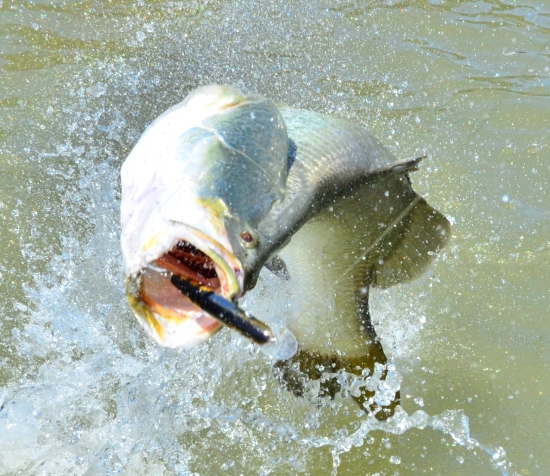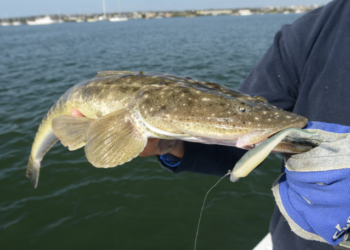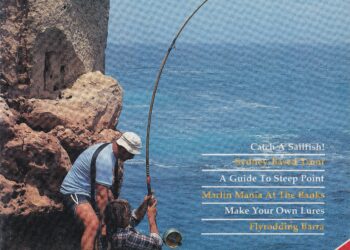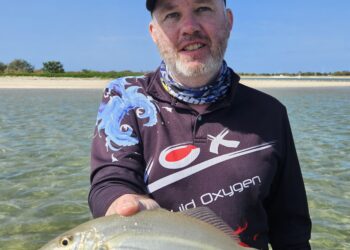Knots & Rigs
THE connection with the most interesting name, in my view, is undoubtedly the “Ducknose Knot”. I’ve heard it referred to as the “Braid Leader Knot” and the “No Name Knot” but the Ducknose is the nom de guerre that has stuck in the circles I frequent. The knot’s moniker is actually a bastardisation of an unprintable typically Aussie reply to someone asking you a question for which you have no answer. I think it’s a pretty cool name – which I’m sure I first heard from Fisho’s Dean Butler – for what is actually a very effective GSP braid to hard monofilament leader connection.
The Ducknose Knot fills a niche in my rigging arsenal for mid-range lure casting and sport fishing tackle. Where it really shines for me is as a go-to hard mono leader to braid connection when lure fishing for barra or Murray cod. Both of these species require a relatively heavy hard mono or fluorocarbon leader for abrasion resistance around the snags and rocky terrain they often frequent. The Ducknose is a simple yet reliable knot that can be tied quickly when the pressure is on during a hot bite.
When tied and pulled up correctly, it’s a connection that provides excellent break strength. As a bonus, it will travel through fishing rod guides relatively smoothly.
The Ducknose Knot does require the use of a doubled GSP mainline, preferably via a Bimini Twist. When pursuing heavyweight species such as big impoundment barra or gorge country cod I reckon it’s prudent to employ a rig that utilizes a doubled line transition between mainline and leader to ensure 100 per cent knot strength in case I really need to redline the tackle on a trophy fish.
I tend to use this connection when fishing GSP lines in conjunction with hard monofilament leaders in the 10 to 30kg range. For lighter leaders in estuarine situations where the chances of hooking XOS creatures are remote I’ll use a Triple Surgeon’s Knot (see March issue) as it provides a fast and reliable light line and leader connection that doesn’t require the GSP mainline to be doubled.
The Ducknose requires considerable force to be applied when forming the knot to ensure it is fully pulled up. For that reason I tend to avoid it for situations requiring the use of ultra-light leaders.
For lure casting situations that require hard monofilament leaders in excess of 30kgs I prefer to use an Albright Special as a connection between leader and mainline or switch over to wind-on leaders. I find the Ducknose knot tends to get a bit bulky and I have a loathing for connections that really clank through your rod guides.
Basically, the Albright provides a less bulky connection because when it’s formed the finer GSP mainline is wrapped round the looped heavy leader material, whereas with the Ducknose the exact opposite occurs – ie, the heavy leader material is wrapped around the doubled GSP mainline. I’m sure plenty of anglers use the Ducknose knot with heavier leader material than I do with excellent results, it’s just a personal preference of mine to avoid knots clanking through rod guides. I’m sure those repeated impacts between knots and guides must result in wear or damage to the connection over time.
One of the greatest attributes of the Ducknose Knot is that it’s a relatively simple and foolproof connection to tie. As previously mentioned, you firstly need to double your GSP mainline, preferably with a Bimini. You then wrap the doubled GSP mainline around the heavy leader material about six to 10 times, depending on the diameter of leader material being used. The heavier the leader material, the less wraps used in the knot. You then feed the tag end of the leader material back through the end of the doubled loop in the GSP mainline and you’re ready to pull the knot up. As this connection requires considerable force to pull it up fully I always lubricate the connection with saliva before tensioning. You’ll know if you have used too many wraps as it will be impossible to fully close the knot up no matter how hard you try to pull it up. You have to tension the knot in two stages, firstly by pulling on the GSP mainline with one hand and both the hard mono leader and leader tag end together with the other hand. Once you’ve pulled the knot up as far as it will go during this first step, release the leader tag end and pull on the GSP mainline and hard mono leader to fully form and complete the knot. You may have to wear a rigging glove on the hand holding the GSP mainline to prevent cuts.
The Ducknose Knot is a must-have connection in any Aussie lure fishers’ arsenal, particularly those pursuing our iconic heavyweight sportfish, the barramundi and Murray cod. It really is virtually foolproof to tie, although much to my embarrassment I did discover while doing a demonstration in a tackle shop a few years back that it tends to slip when tied with Berkeley Vanish fluorocarbon. I’m glad I discovered that fact in the shop and not on the water while connected to a trophy fish.
See a video demonstration of this knot HERE.





















